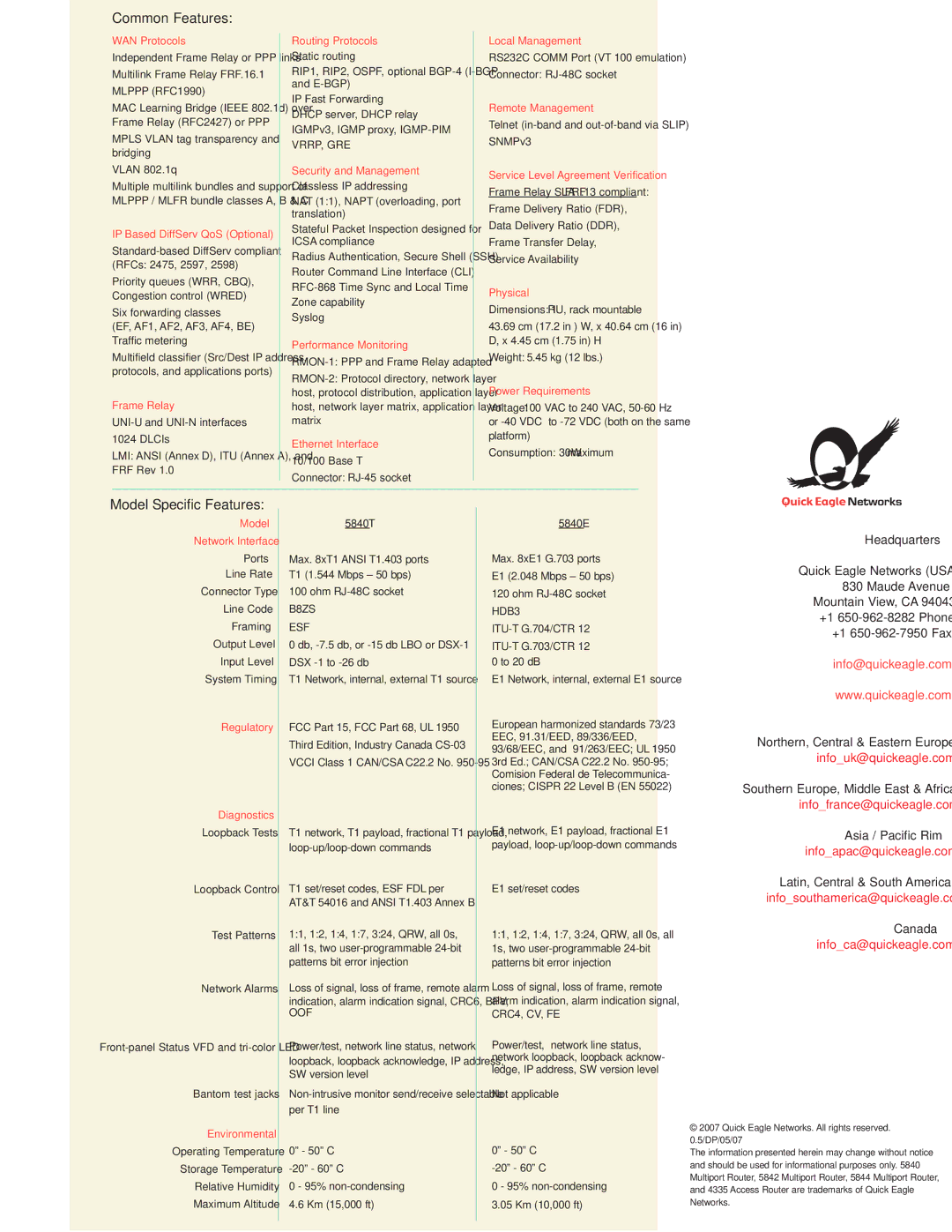5840 specifications
Quick Eagle Networks 5840 is a powerful router designed to meet the demanding needs of modern networking environments. It stands out for its robust performance and advanced feature set, making it an ideal choice for enterprises that require reliable connectivity and high bandwidth.One of the main features of the Quick Eagle Networks 5840 is its support for various networking protocols. This versatility allows organizations to integrate the router into different network architectures seamlessly. The 5840 is equipped with multi-Gigabit Ethernet ports, offering high-speed connectivity that can support multiple devices without compromising performance. This is crucial for businesses that rely on real-time data processing and high-volume transactions.
The 5840 incorporates state-of-the-art security technologies to protect sensitive data and maintain network integrity. It offers advanced firewall capabilities, intrusion detection systems, and VPN support. These features ensure that corporate information is safeguarded against unauthorized access and cyber threats, which is increasingly important as businesses become more digitally connected.
In terms of scalability, the Quick Eagle Networks 5840 is designed to grow with an organization. It supports modular expansion, allowing enterprises to add additional ports or upgrade hardware as their needs change. This flexibility means businesses do not have to invest in new equipment frequently, saving costs in the long run.
The router also includes built-in quality of service (QoS) features that help manage network traffic effectively. By prioritizing certain types of data, such as voice over IP (VoIP) or video conferencing, organizations can ensure that critical applications receive the bandwidth they require for optimal performance. This is particularly beneficial in environments where multiple applications compete for limited network resources.
Another significant aspect of the Quick Eagle Networks 5840 is its user-friendly management interface. Network administrators can easily configure and monitor the router through an intuitive web interface or command-line interface. This simplicity reduces the time and effort required to maintain the network, allowing IT staff to focus on other important tasks.
In summary, the Quick Eagle Networks 5840 offers a compelling blend of performance, security, and scalability. Its support for various networking protocols, advanced security features, modular design, QoS capabilities, and user-friendly management make it an excellent choice for organizations looking to enhance their network infrastructure. As businesses continue to evolve, the 5840 positions itself as a reliable solution for current and future networking needs.

